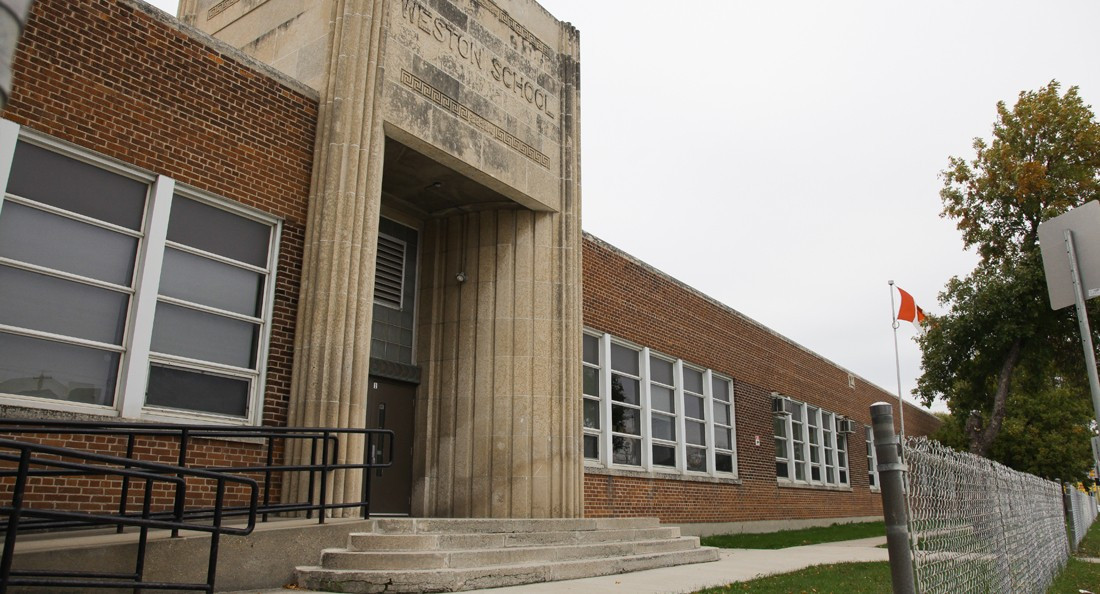The truth below us
Coming to terms with lead contamination and government neglect
Residents in Point Douglas are reeling as the revelation of a decade-old lead contamination report came to light on Sept. 13.
Kate Sjoberg, who is running for city council in Point Douglas, says “the neighbourhood you live in, the schoolyard that you play at, the neighbourhood park, all (of a) sudden your sense of that place changes a bit when you get information like this.”
Sjoberg says her biggest takeaway from the contamination reports is that the City needs to consider “the way that we plan neighbourhoods, the interfaces between industry and residential neighbourhoods.
“We need to be really careful about these interfaces because of the potential for contaminants to impact all of our health. And so we need to talk about short-term plans, medium-term plans and long-term plans.”
Sjoberg says in the short term, Weston School is putting uncontaminated soil over the area where children play, and that long term, the City may need to revisit the issue of moving the railroad tracks.
“I know that’s a non-starter with the Province at this point in time. The Province hasn’t been interested in that conversation, but I think as a city we need to revisit it and drive it again,” she says.
While there is room for municipal governments to act on environmental problems like lead, Alan Diduck, an environmental studies professor at the University of Winnipeg who teaches environmental law, says that lead contamination falls squarely under provincial jurisdiction.
“On the face of it, it does seem to be an abrogation of the responsibility of the provincial government to act in the best interests of the citizens and the environment, and it seems to me that the lack of a health risk assessment as soon as the test results were known is inexplicable,” Diduck says.
But Diduck says as is, there’s relatively little to prevent something like this from happening.
“I’m not sure what could have prevented this, other than a firm commitment on behalf of the NDP government when they found the final results came to light to act on it,” Diduck says.
“Maybe if we had stronger whistleblower legislation, maybe if we had better freedom of information laws or a comprehensive environmental bill of rights, which quite often includes both of those components, (that) may have offered further protection than we had in place when the tests came to light,” Diduck says.
Diduck says at this point, the Province should retest the areas to see if anything has changed since the original tests. If they confirm that there is still unsafe levels of lead, which Diduck says seems likely, they should be followed by a health risk assessment and remediation of the soil.
He also suggested that the Province should consider “establish(ing) terms of reference for the clean environment commission to do an investigation and provide some recommendations.”
“I guess the big question is: who should bear the responsibility and the cost to remediate that soil?” Diduck says. “I would imagine that the polluters in this case are probably not in existence anymore, so we don’t know exactly which firms could be linked to the contamination, but you know if there’s a good chance they’re not around, then it’s the taxpayers that should and would bear the costs.”
The NDP and Progressive Conservatives use the Point Douglas contamination and potential contamination in St. Boniface against each other in the legislature.
Diduck says, “it doesn’t come as a big surprise that at this stage the parties seem to be more interested in making political points and holding fast to a partisan point of view than taking action right now to do further tests. Although, I understand that the current provincial government is committed to doing further tests and finding out the state of the health of the soil.”
Published in Volume 73, Number 5 of The Uniter (October 4, 2018)







